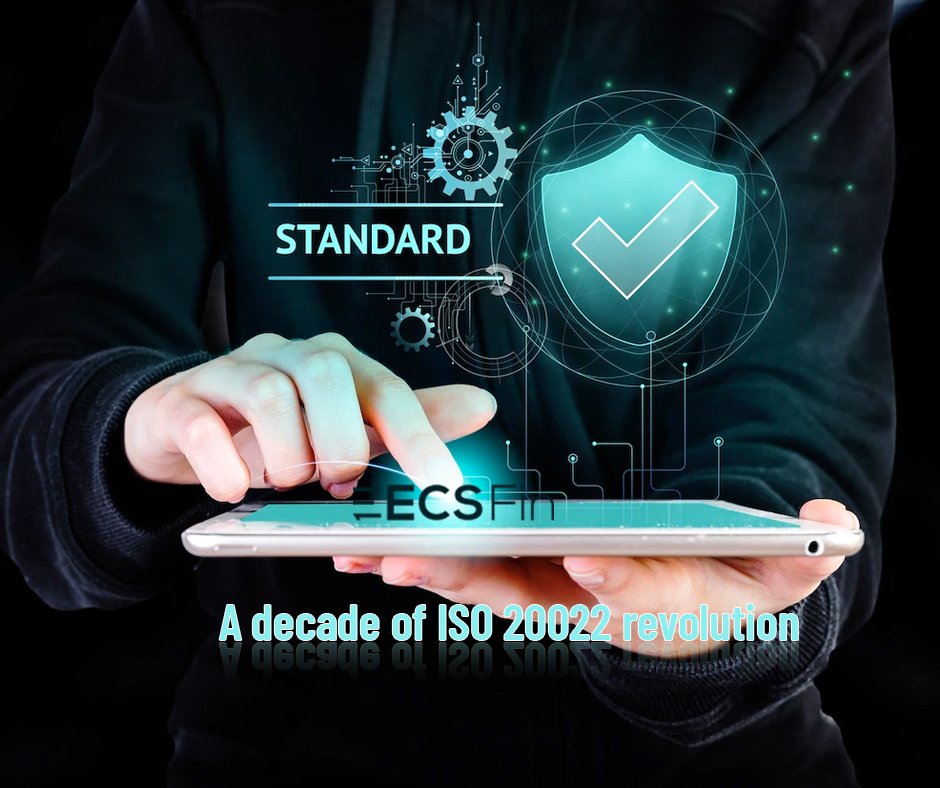About Us
Blog
Universal financial industry message scheme
A decade of ISO 20022 revolution
ISO 20022 migration is unequivocally one of the most significant transformations to impact the financial industry in recent years. The messaging standard will harmonize the data structure for financial messages for today’s real-time payments world.
At standardizing data structure, ISO 20022 empowers organizations to share information across ample financial services applications and opens new avenues for developing digital outlay services. Many countries are adopting ISO 20022, implementing this messaging as the foundation of a payments and securities markets infrastructure that meets the highest international standards.

Why is the Industry Adopting ISO 20022?
Since standards are a cornerstone of the financial industry, they enable industry automation, develop correspondent banking systems to trade, reduce the cost and risk of cross-border business, and provide rich and well-defined structures for essential data. ISO 20022 messaging standard reflects the open opportunity for data exchange to get rich with all the necessary information and supporting documents. Until now, it has been adopted by market infrastructures in more than 70 countries for payments and securities business, superseding domestic or legacy formats.
It has been stated that the next five years will be the era of ISO 20022 dominating high-value payments, supporting 79% of the volume and 87% of the value of transactions across the globe. In fact, in the instant payments market, ISO 20022 is considered the principal adopted in Europe, Australia, Canada, Sweden, Denmark, Singapore. Underpinned are some relevant reasons for adopting ISO 20022.
ISO 20022 features
Below shared is the structured roadmap with typical three focus areas where these initiatives are enhancing the cross-border payments:
ISO 20022 brings three core benefits for payments compliance. It allows data-rich information, ensuring all parties’ compliance data is included, which was impossible in MT messages due to field restrictions. Secondly, ISO 20022 party information structure makes automated screening more reliable and efficient, reducing false positives. Finally, the standard incorporates specific data elements for debtor and ultimate debtor, and creditor and the ultimate creditor that can be either excluded or truncated and added to another field, where it might be overlooked in screening.
Consumers' appetite for real-time payments, transparency, and speed is rapidly transforming. ISO 20022 is designed to be 'future proof' and adapt to new technologies to meet customer requirements and improve customer experience.
SWIFT's gpi allows financial institutions to offer a cross-border payment experience to their customers. It means that funds can be transferred within the same day globally with transparency of charges and access to real-time status information. ISO 20022 promises to enable further service improvements based on the enhanced data that it supports.
ISO 20022 has become a buzzword in the corporate-to-bank workspace initiated by the Common Global Implementation (CGI) initiative. This standard helps to relish new services, stay compliant with regulatory norms, and respect service levels ensuring that all data submitted in the corporate payment initiation is end-to-end encrypted.
CBPR+: Cross-border Payments and Reporting Plus
Another word creating a lot of noise and gripping every corporate, bank, and capital market investor is CBPR+. It’s an acronym of Cross-border Payments and Reporting Plus stating the consumption ways of ISO 20022 for cross-border payments and cash reporting, especially on the SWIFT network. The SWIFT message service will validate conformance to CBPR+ specification, so users must implement the specification efficaciously.
Usuage Guidelines For CBPR+ Implementation Of ISO 20022
The CBPR+ working group, experts of Payments Market Practice Group (PMPG), has proposed many guidelines to define the consistent use of ISO 20022 in cross-border payments. Referring to the first phase of defining the specifications, three cash management (camt) and four payments clearing and settlement (pacs) are now available.
The CBPR+ working group, experts of Payments Market Practice Group (PMPG), has proposed many guidelines to define the consistent use of ISO 20022 in cross-border payments. Referring to the first phase of defining the specifications, three cash management (camt) and four payments clearing and settlement (pacs) are now available.
In order to reinforce the move towards CBPR+compliant ISO 20022 messages, the working group members of SWIFT have also introduced a set of translation rules from the new standards to MT. Since November 2021, these translation rules have exhibited coexistence measures in the SWIFT network and customer premises. Moreover, the next term, HVPS+ (The High-Value Payment System), defines how ISO 20022 will be used in regional clearing systems. It should be noted that the HVPS+ group works closely with the CBPR+ group to coordinate any new messages or message change requests.
How ECS fin is prepared for ISO 20022 standards?
Notified by SWIFT, 85-95% of the incumbent cross-border payments work on the unstructured beneficiary and ordering data leading to trim 10% of transactions, thereby demanding manual intervention. ECS Fin ISO 20022 migration solution supports the new CBPR+, & HVPS+ standards and processes, enabling counterparties to participate efficiently in a highly competitive environment.
- A completely packaged solution that is quick to deploy while comprehensive in ISO 20022 processing support
- Remove the overhead of recurring maintenance problems when ISO20022 standards and associated market practices change.
- Supports end-to-end message processing workflows for all type of transactions
- Retrieve data via API, sFTP, MQ Series, Web services, SWIFT, or any other channel
- Innovative on the go with a suite of comprehensive banking APIs and a Native ISO real-time rail
- Enrich the content employing a wide range of data sources
